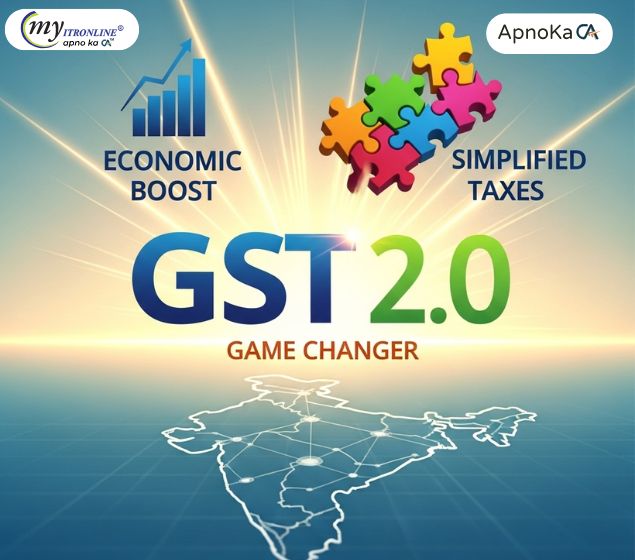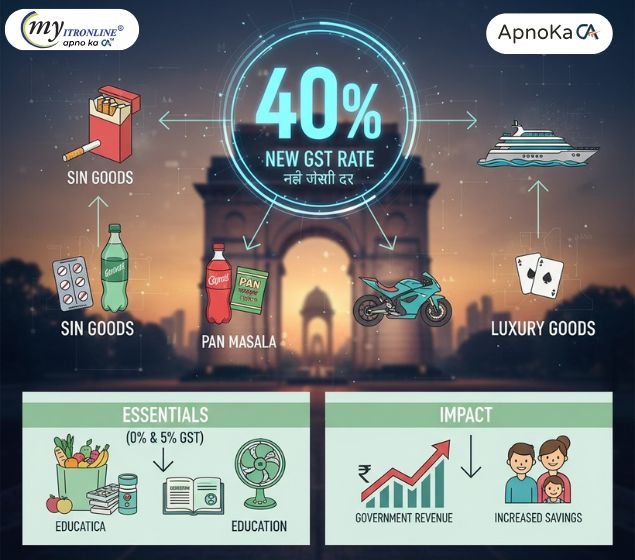# lic
12 posts in `lic` tag

Seven Years in Jail for Two PAN Cards: A Tax Evasion Warning
A recent court judgment has made it clear that holding more than one PAN card is no longer just a minor issue with a 10,000 fine. In a high-profile case, two individuals were sentenced to seven years in jail for possessing duplicate PANs, one of which was forged. The ruling shows that when a second PAN is linked to fraud or forgery, it becomes a criminal offense under the IPC. Taxpayers with duplicate PANs must act quickly and surrender the extra card to avoid severe legal consequences.

GST Removed on Insurance But Agents Are Paying the Price
The government has eliminated the 18% GST on life and health insurance premiums effective October 1, 2025. While this benefits customers by lowering costs, insurance agents—especially those working with private insurers—are facing commission cuts of up to 18% due to the loss of input tax credit. Public insurers are absorbing the GST cost, but private companies are passing it on to agents.

GST 2.0: A Game Changer for India? Simplified Taxes & Economic Boost
This blog post provides a comprehensive overview of India's GST 2.0, implemented on September 22, 2025. It details the key features, including the reduction of tax slabs to 5% and 18% (with a new 40% for luxury/sin goods), lower taxes on essential goods, durables, and automobiles, and increased prices for luxury items. The article identifies beneficiaries like everyday households, the middle class, farmers, healthcare consumers, and MSMEs. It also addresses potential challenges such as revenue shortfall, price pass-through issues, and transition headaches for businesses. Finally, it outlines expected economic ripples and crucial factors to monitor for the reform's success, concluding that GST 2.0 is a bold step towards simplifying life for millions. An appendix with sample MRP comparisons is also included.

Goods & Services Now Under 40% GST Slab, Effective from 22 September 2025
India is set to implement GST 2.0 from September 22, 2025, introducing a new 40% GST rate for "sin" and luxury goods. This reform simplifies the existing tax structure, lowers GST on essentials, and aims to balance public health with revenue generation. The move will benefit households with reduced costs on necessities, while consumers and industries dealing with luxury and harmful products will face higher taxes.GST 2.0: India Introduces New 40% Tax Slab for Luxury & Sin Goods
.jpg)
Goodbye 1961, Hello 2025: India's New Income Tax Act Explained in Simple Terms
This blog post details India's landmark decision to replace the sixty-year-old Income-tax Act, 1961, with the new, simplified Income-tax Act, 2025, which will be effective from April 1, 2026. It breaks down the key changes in simple terms, explaining the reduction in legal complexity, the introduction of a unified "Tax Year," clearer definitions for digital assets, and the move towards faceless, technology-driven tax processes. The post highlights how these changes aim to create a more transparent, efficient, and taxpayer-friendly direct tax system for individuals and businesses across the country.

Decoding ITR Complexity: Major Changes to Sahaj & Sugam for AY 2025-26
For Assessment Year 2025-26, the familiar ITR-1 (Sahaj) and ITR-4 (Sugam) forms, traditionally seen as straightforward, are undergoing significant changes that add layers of complexity. This blog explores the impact of the new tax regime as default, increased disclosure requirements, and the need for meticulous data reconciliation, explaining why even simple returns now demand careful attention. Discover how MYITRONLINE can help you navigate these evolving tax landscapes.
.jpg)
CBDT's View on 12 Lakh Tax Rebate: Understanding Capital Gains Exemptions
The Union Budget 2025 included a tax credit for yearly incomes up to Rs 12 lakh, however capital gains are excluded. This blog examines the refund, its exclusions, and ways for maximizing tax savings.
.jpg)
1995's EPS 95 Pension Plan: New Guidelines for Workers
This blog post discusses the Employees' Pension Scheme (EPS) 1995, a social security program in India designed to provide retirement income to employees in the organized sector. It covers the scheme's launch, purpose, administration by the EPFO, and the age at which employees can begin receiving pension benefits. The focus is on explaining the EPS 95 scheme and its significance for retirement planning.
.jpg)
Government Clarifies Position on Capital Gains Tax Reforms
By declaring that no structural modifications to the capital gains tax system are under consideration, the government has reassured private investors and High Net Worth Individuals (HNIs). This ruling, which was announced on January 22, 2025, gives investors much-needed confidence and guarantees stability in India's tax system. The blog discusses the basics of capital gains tax, making a distinction between short-term capital gains (STCG) and long-term capital gains (LTCG), and stressing the significance of the government's resolve to preserve the current framework. Stability in tax policy, the maintenance of investment incentives, and increased market trust are important lessons learned that guarantee investors may smoothly organize their finances.
.jpg)
EPF Withdrawal 2024: Eligibility, Rules, and Tax Implications Explained
When an employee retires or needs money, the Employees' Provident Fund (EPF) provides it. This guide describes the 2024 EPF withdrawal regulations, including eligibility, types of withdrawals, tax ramifications, necessary paperwork, and more. Find out about new developments such as AI-based claim settlements and how to guarantee a seamless EPF withdrawal procedure.
.jpg)
High Court Challenges CBDT's Stand on Appeals Below Monetary Limits
The CBDT's Circular Nos. 05/2024 and 09/2024, which do not have an exception clause for tax appeals under monetary restrictions, raised concerns from the High Court. Addressing important legal issues, ongoing disagreements, and consistent tax administration may be hampered by its omission. To maintain justice and fairness, the HC urged CBDT to assess and revise the circular.
.png)
Big Changes in India’s Tax Policies: Are You Exempt in 2024?
Under its new policy, the Central Government has promised significant income tax relief, exempting certain groups from paying taxes. Seniors over 75, farmers who make their living exclusively from farming, people with disabilities, and those whose incomes have recently increased are all benefited by this program. The government hopes to lessen economic disparities, increase financial stability, and make tax compliance easier via these exemptions. Find out more about this historic announcement's categories, advantages, and ramifications.
